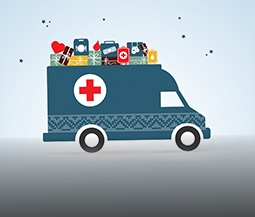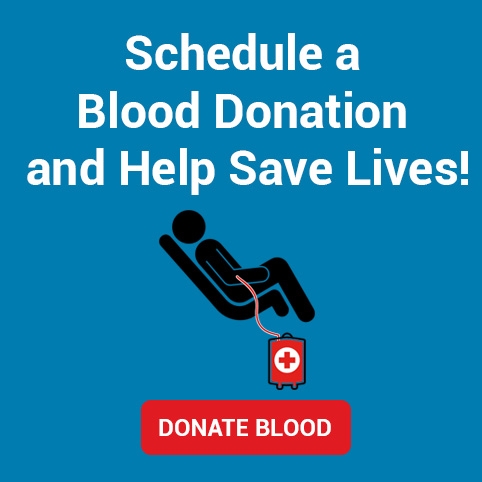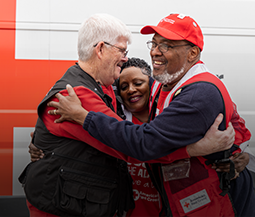The global Red Cross Red Crescent network’s 2018 World Disasters Report: Leaving No One Behind spotlights the global challenges involved in delivering aid to the most vulnerable people—along with solutions to help humanitarian actors better reach communities around the world.
Reaching the hardest to reach
In the report, global experts in humanitarian assistance and disaster response reveal that a lack of funding is not the only issue limiting how many people in need receive aid.
The International Federation of Red Cross and Red Crescent Societies (IFRC) found that millions of people may not be reached because of issues including:
- Out of reach communities cut off by geography, insecurity, war, violence against humanitarian personnel, and other conditions.
- Out of sight communities, including those that are unmapped. Poor or non-existent mapping, particularly in remote areas and fast-growing urban slums, can also render entire communities invisible.
- People left out of the loop, including those with needs that have been long acknowledged. In particular, people with disabilities and elderly people.
Elhadj As Sy, Secretary General of IFRC writes in the report, “Who are these millions of people left behind? Every human being has a name, a story–and a beating heart”. He continued, “the missing millions become ‘crisis-affected populations’, ‘migrants’, ‘refugees’, ‘beneficiaries’– or just the neglected, the dispossessed, the dead”.
Calling partners to action
Local grassroots groups and organizations—including Red Cross and Red Crescent Societies—often have critical information about who is in need, where they are, and how they could be helped.
The report urges humanitarian actors to invest in local action and solutions to ensure no one is left behind. The report presents key solutions to the humanitarian sector, including:
- Recognize and invest in local action. These actors, including Red Cross and Red Crescent branches, are already present in crisis settings. They speak local languages, understand local customs, and are often best placed to find and support the most isolated and vulnerable people.
- Invest in community preparedness. This is an area where the Red Cross is uniquely positioned. The American Red Cross trains local volunteers year-round as disaster responders and works with children in local schools to prepare for emergencies.
- Improve use of data and technology to target response and reach more people. For example, through the Missing Maps initiative—founded in part by the Red Cross—volunteers help to put vulnerable communities on the map with open-source data and local validation.
Learning from experience
Everyday down the street, across the country, and around the world the Red Cross works around the clock to reach people in need after disasters and crises. In Nepal, which is known for its rugged terrain, Red Cross responders faced steep mountains and extreme conditions after the devastating earthquakes that killed around 9,000 people in 2015.
The Nepal Red Cross and other partners, including the American Red cross, travel hours to remote areas to provide health support and other assistance to communities. After the earthquakes, the humanitarian community mapped rural villages across Nepal using the Humanitarian Open Street Map platform. These maps enable relief workers to reach even the most remote communities.
The Red Cross is also investing locally by training neighbors to help neighbors, as community-based volunteers.
READ THE FULL REPORT
Read the 2018 World Disasters Report here: https://media.ifrc.org/ifrc/world-disaster-report-2018/














